You may not be an acrobat, but you should probably know how to balance on one leg. After all, life — and most forms of exercise — doesn’t always happen on stable footing. Single-leg exercises like the split squat can be your saving grace in the weight room.
The dumbbell split squat is especially potent if you want to strengthen your legs while also developing better bodily awareness and postural control. What’s more, it walks the line nicely between the simplicity of a standard squat and the at-times-too-challenging nature of the Bulgarian split squat.

Think of the dumbbell split squat as the ideal middle-ground movement. Here’s how to do it properly, and what you stand to gain from splitting your feet.
- How to Do the Dumbbell Split Squat
- Dumbbell Split Squat Sets and Reps
- Common Dumbbell Split Squat Mistakes
- Dumbbell Split Squat Variations
- Dumbbell Split Squat Alternatives
- Muscles Worked by the Dumbbell Split Squat
- Benefits of the Dumbbell Split Squat
- Who Should Do the Dumbbell Split Squat
- Frequently Asked Questions
How to Do the Dumbbell Split Squat
First things first, take note — the dumbbell split squat is not the same exercise as the Bulgarian split squat. The hallmark feature of Bulgarians is that you suspend your non-working leg on an elevated surface.
For this one, you’ll need a pair of dumbbells and some open floor space only.
[Read More: Best Dumbbell Exercises]
Step 1 — Split Your Feet
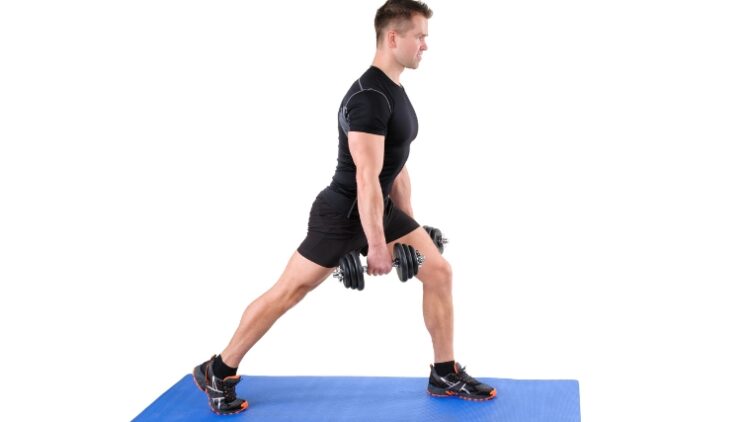
Hold a dumbbell in each hand and stand upright with your feet under your hips. Then, take your non-working leg (it can be your right or left, the order doesn’t matter) and step backward behind you, balancing on the balls of that foot.
Step forward about two-thirds of the distance with your other leg. Your weight should be evenly distributed, if slightly biased towards your working leg.
Coach’s Tip: If you’re having real problems with maintaining your balance, step slightly outward with your non-working leg as well to create a wider base of support.
Step 2 — Drop Your Hips
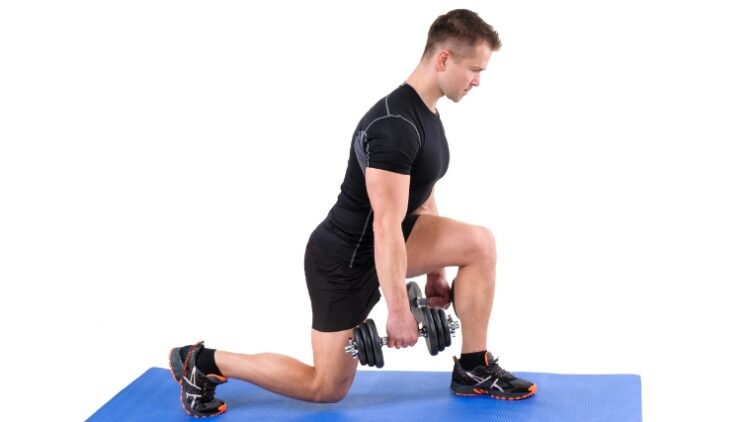
From a split position, initiate the squat by dropping your hips straight down. You should be able to sink down until your working thigh becomes parallel to the floor, or your non-working knee touches the floor. Once either occur, reverse the motion and push back up with your working leg.
Coach’s Tip: Resist the temptation to crash your non-working knee into the floor on each rep. Ideally, it should never touch the ground.
Dumbbell Split Squat Sets and Reps
The standard split squat, whether you use dumbbells or not, is a fantastic leg accessory exercise — but it shouldn’t be the star of the show. When you go to program any sort of single-leg squat, you should be cognizant of that fact. Here are a few options:
- As a Warm-Up: Go for 2 sets of 12 to 15 reps per leg with a very light weight.
- For Muscle Growth: Try 3 sets of 8 to 10 reps with a moderate weight.
- To Improve Balance: Do 2 or 3 sets with light weight, focusing on a slow tempo.
Common Dumbbell Split Squat Mistakes
It may lack the intricate setup of other single-leg lower-body exercises, but you can still mess up the dumbbell split squat if you aren’t careful. Steer clear of these common errors if you want to get the most value out of the exercise.
Knee Hitting the Floor
Most of the benefits of the dumbbell split squat come from the fact that you’re constantly balancing your body in space. If you regularly bounce your back knee off the floor during your reps, you rob yourself of those gains and can inadvertently make the exercise easier as a result.
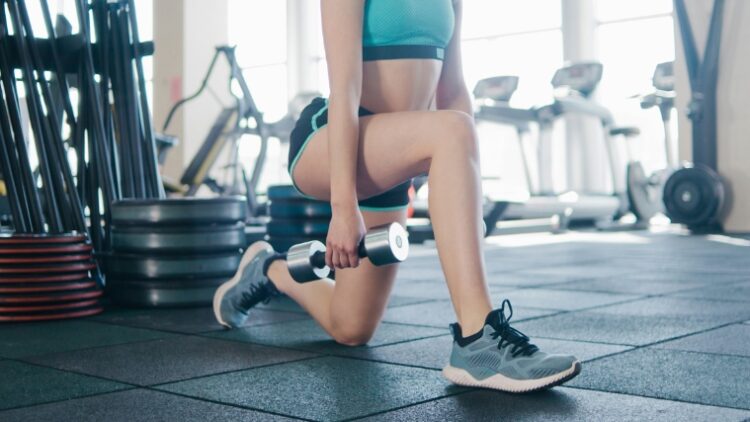
Instead, focus hard on sinking down until your back knee barely touches the floor, but stop just short of that point. This ensures you maintain constant tension on the working muscles.
Lopsided Balance
It’s no small feat to perform any single-leg movement, let alone a free weight one-legged squat. You may find that you can’t keep your balance in check to the point that it interferes with your ability to apply effort.
If this occurs, you may be putting too much of your body weight on either your front or back leg. Before you start your set, fiddle with your weight distribution to ensure that one leg isn’t holding too much of your weight.
Holding Tension in Your Arms
Make no mistake, the dumbbell split squat is a leg exercise through and through. That you’re holding a pair of weights in your hand is a complete formality. Still, only grip the weights tight enough to keep them securely in your hands.

If you find yourself shrugging your shoulders, bending your elbows, or swinging the weights, you might be lifting too heavy and disrupting your ability to focus on your technique.
Dumbbell Split Squat Variations
Truth be told, there aren’t too many different spins you can put on the dumbbell split squat. However, you can dial up (or bring down) the difficulty by working with different implements or holding onto something for balance.
Assisted Split Squat
You might find a use for this one as part of your warm-up or during some dynamic stretching. On the other hand, the assisted split squat is a really reliable way to introduce yourself to unilateral training.
Any stable, vertical surface will work. You can stand between the pillars of a power rack or squat station and hold onto each frame for balance while you slowly drop in and out of a split squat.
Deficit Split Squat
To make the dumbbell split squat significantly more difficult, grab a pair of bumper plates. By elevating both your front and back feet, you provide more space for your non-working knee to descend.
This elongates your range of motion and helps you access more hip flexion, ultimately creating a bigger challenge for your glutes to help propel you out of the bottom of each rep.
Dumbbell Split Squat Alternatives
If your balance is a limiting factor, or you simply don’t enjoy the exercise, you don’t have to do the dumbbell split squat to get a good leg workout in. There are plenty of other options that train your lower body in a comparable manner.
Single-Leg Leg Press
You can blast your quads and glutes without depending on your balance whatsoever if you head to the leg press instead.
The single-leg leg press works well if your focus and goals in the gym revolve entirely around muscular strength or hypertrophy. There’s nothing to balance; the machine puts it all on rails for you, literally. This allows you to focus entirely on pushing as hard as you can.
Walking Lunge
To turn the split squat into more of a conditioning tool, find some free space and perform lunges instead. Lunges, whether weighted or unweighted, are a great cardio tool that also happen to torch your glutes and quadriceps at the same time.
If you can already do the dumbbell split squat, you might think lunges are a walk in the park. However, the added element of taking steps increases the balance demand and will crank your heart rate up as well.
Single-Leg Hip Thrust
Despite what you may think, squat variations aren’t all that effective at building up your posterior chain. They work your glutes mightily well, but you won’t get much hamstrings engagement from most styles of squat.
You can train your balance and side-to-side stability while beefing up your backside with the single-leg hip thrust. This move is great for helping you “find” your glutes as well if you have trouble engaging them on other exercises.
Muscles Worked by the Dumbbell Split Squat
Balance doesn’t depend on one individual muscle. It’s more of a neurological task. That said, like any good lower-body squat variation, the dumbbell split squat engages most of the musculature from your waist to your ankles.
Quadriceps
Your quads are made up of four individual compartments; the vastus lateralis, vastus intermedius, vastus medialis, and the rectus femoris, all of which help you bend and straighten your knee against resistance.
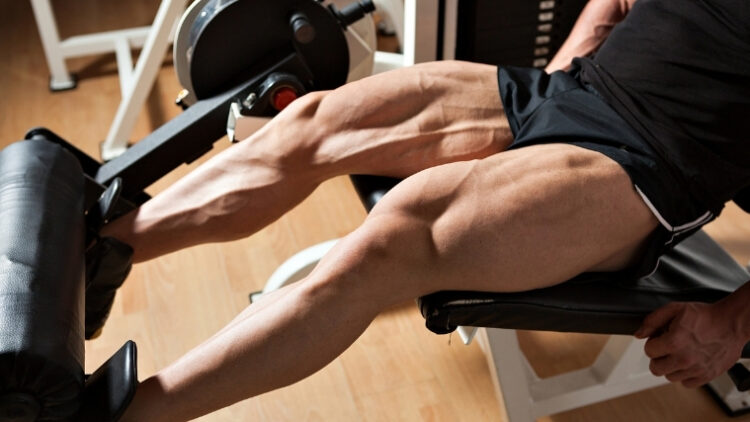
When you perform the dumbbell split squat, your quads will bear most of the overall load, particularly in the bottom half of each repetition when your knee is deeply bent.
Glutes
Contrary to what you may have heard, your glutes are actually the most active at the bottom of the squat, not the top. They help you extend your hips to stand up fully, sure, but there isn’t much tension on the tissue at that point.
At the bottom of each rep, though, your hips are placed into flexion. It is the duty of your gluteal muscles to reverse that motion and pull your pelvis back up to a standing position.
Core
All squats engage your core to some degree. If not, you’d simply topple forward every time. By splitting your feet in two different directions, you demand much more of your abdominals, obliques, and even your lower back.
These tissues have to resist gravity while also working to keep your pelvis and spine in alignment while you squat. They’re also responsible for preventing any unwanted side-to-side shifting. A strong core will, more than perhaps any other individual muscle group, help you maintain your balance.
Benefits of the Dumbbell Split Squat
There are far more reasons to do the dumbbell split squat than not to. Whether you need to refine your balance and bodily stability, have been trying to grow your legs, or are on the prowl for a new squat accessory, the split squat is a solid pick.
Great for Training Balance
Balance training can be tricky. If you try movements that are too difficult, the training ends up feeling more frustrating than anything else. Conversely, take things too easy and you run the risk of getting bored or wasting your valuable time in the weight room.
The dumbbell split squat is a low-to-medium level balance exercise. If you have limited experience working on one leg, are perhaps coming back from an injury, or have taken an extended amount of time away from exercise, it can be a phenomenal movement to help you find your sea legs again.
Convenient to Perform
You can’t overlook convenience when it comes to exercise selection. There may be better options available than the dumbbell split squat for your specific fitness goals, but are those options equally practical?
Perhaps not. Some balance-oriented single-leg movements take a while to set up and perform properly, while others can feel too much like a parlor trick and not enough like a hard leg workout. The dumbbell split squat rides that line perfectly, and you can do it just about anywhere.
Carries Over to Other Movements
When you go to select accessory exercises as a strength athlete, carryover is a huge deal. It refers to how well the exercise specifically trains qualities that are relevant to other movements.
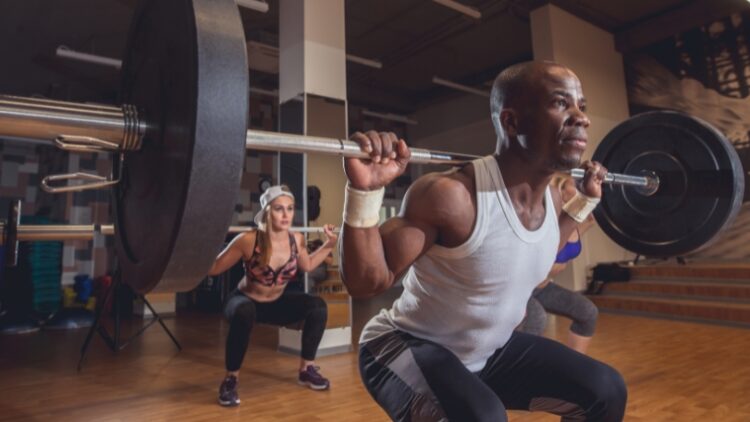
For example, when you perform a two-legged barbell squat, you might notice that your left quad doesn’t exert as much force as your right. Isolating that leg with the dumbbell split squat should create gains that carry back over to your back squat.
Who Should Do the Dumbbell Split Squat
Knowing if an exercise is right for you is half the battle. The dumbbell split squat may sound alluring — and, to be fair, it is — but before you make it the centerpiece of your next workout, make sure it’s right for you.
Newcomers
One of the best parts of starting up in the gym is the fact that you can quickly make gains in multiple athletic qualities at once. You can expect to improve your balance, gain more muscle, and increase your strength simultaneously, so you should pick exercises that stimulate at least one of those qualities at a time.
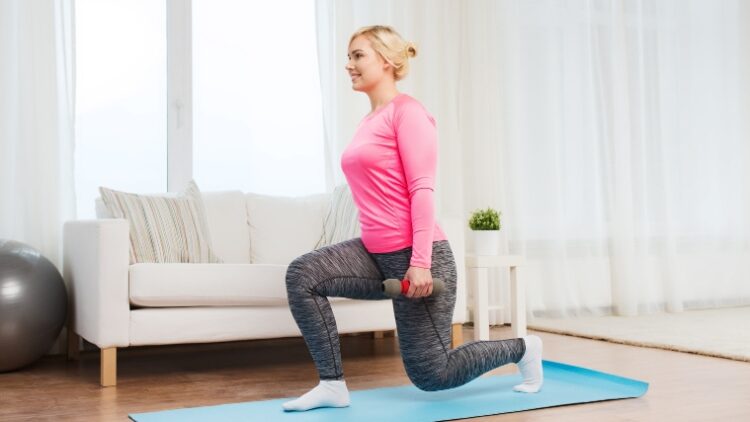
[Read More: The Best Bodyweight Exercises, + Workouts and Tips From a CPT]
The dumbbell split squat hits each of those beats. It’s a solid leg movement that also bolsters your balance at the same time.
Bodybuilders
Bodybuilding is all about finding the right tool for the job. If you’re interested in bulking up, you need movements that target specific muscles in a way that aligns well with your unique anatomical structure.
A single-leg movement like the dumbbell split squat is great for isolating one leg over the other. Balance isn’t really relevant to bodybuilding, so working from a split position rather than suspending your back leg is a wise choice as well.
Athletes
Basketball players, track and field runners, and mixed martial artists all have one thing in common: They spend a lot of time on one leg during their respective sports. As such, if you’re an athlete, you should probably replicate that scenario during your weight training as well.
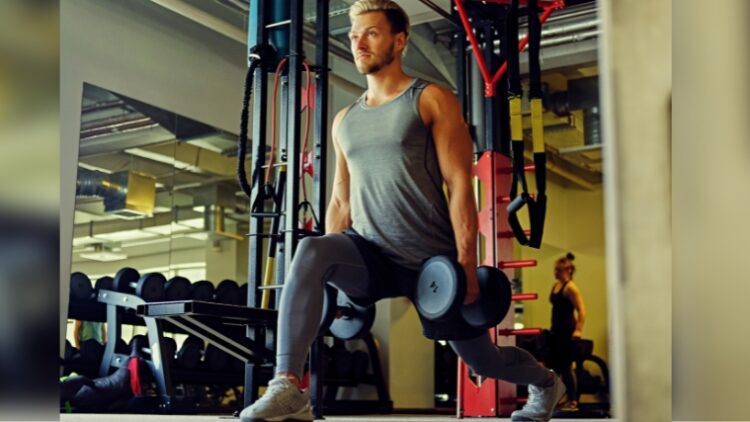
The split stance closely mimics many of the positions an athlete can find themselves in during a match. Building up your balance and leg strength before game day will pay dividends when you head out onto the field.
Grab Those Gains
Building your legs shouldn’t be a head-scratching experience. You just need to know what exercises to do, why they work well, and how to implement them into your next session.
All that information is available to you right here, and then some. The dumbbell split squat is one of the best ways to build up your legs and become confident in your balance at the same time. Get a leg up on your next workout with the dumbbell split squat.
FAQs
Still scratching your head about the split squat? No worries. Here are a few common questions you might have, answered and unpacked.
How wide should I split my feet during the dumbbell split squat?
Your stance will depend on a couple of factors. Namely, your hip flexibility, the length of your limbs, and how confident you are in your balance. A longer split is more challenging to stabilize but helps you access deeper ranges of motion. Your best bet is to experiment and find the stance that works for you.
Do I have to use dumbbells for the split squat?
Absolutely not. Dumbbells are wonderful because they apply resistance equally to your left and right sides. This can help mitigate some of the side-to-side shifting you might feel when you set up for the split squat.
You can get this same feeling by holding kettlebells instead. To make things more difficult, you can also perform the exercise with a barbell on your back, or even by holding a weight in front of your body in the goblet position.
Featured Image: SOK Studio / Shutterstock